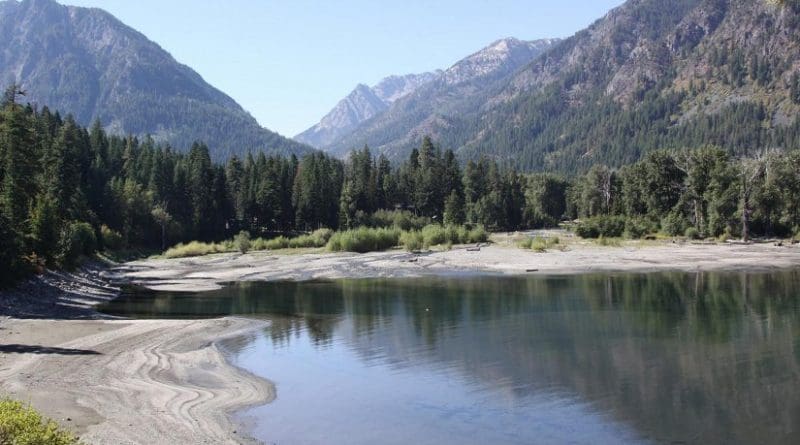West Coast Record Low Snowpack In 2015 Influenced By High Temperatures
The western-most region of the continental United States set records for low snowpack levels in 2015 and scientists, through a new study, point the finger at high temperatures, not the low precipitation characteristic of past “snow drought” years.
The study suggests greenhouse gases were a major contributor to the high temperatures, which doesn’t bode well for the future, according to authors of a new study published today in the journal Geophysical Research Letters.
In 2015, more than 80 percent of the snow measurement sites in the region – comprised of California, Oregon, Washington, western Nevada and western Idaho – experienced record low snowpack levels that were a result of much warmer-than-average temperatures. Most of the previous records were set in 1977, when there just wasn’t enough moisture to generate snow, according to Philip Mote, director of the Oregon Climate Change Research Institute at Oregon State University and lead author on the study.
“The 2015 snowpack season was an extreme year,” Mote said. “But because of the increasing influence of greenhouse gases, years like this may become commonplace over the next few decades.” Impacts of the snow drought in California, Oregon and Washington led the governors of those states to order reductions in water use and saw many ski areas, particularly those in lower elevations, struggle.
California has been in a drought since 2011 and this multi-year period of low precipitation, by some measures, is the state’s most severe in 500 years. In 2015, higher temperatures combined with low precipitation, leading to one of its lowest snowpack levels on record.
Oregon and Washington experienced much higher-than-average temperatures during the 2014-15 winter but were not as dry overall as California. Oregon, in fact, was 6.5 degrees (Fahrenheit) warmer than average during that period.
“The story of 2015 was really the exceptional warmth,” said Dennis Lettenmaier, distinguished professor of geography at University of California Los Angeles and co-author of the study. “Historically, droughts in the West have mostly been associated with dry winters, and only secondarily with warmth. But 2015 was different. The primary driver of the record low snowpacks was the warm winter, especially in California, but in Oregon and Washington as well.”
The 2015 year was an eye-opener for the scope of the snow drought:
- A total of 454 sites in the western United States (or 81 percent of the total sites) recorded record-low snowpack levels that year;
- For 111 of the sites, the April 1 value was zero for the first time ever, essentially indicating that there was no snow left;
- The overall snowpack level on April 1 in California and Oregon was 90 percent below average.
To determine the impact of greenhouse gases, the researchers used tens of thousands of citizen computers, each running a regional climate simulation in a sort of crowd-sourced supercomputer. The researchers ran one set of simulations using actual sea surface temperatures and greenhouse gas emissions from December 2014 to September 2015.
Then they ran a series of simulations with lower greenhouse gas levels corresponding to the pre-industrial era, and teased out the impacts. A third set of simulations used modern greenhouse gases but removed the unusual pattern of sea surface temperatures in 2014-15.
“The data showed that both greenhouse gases and sea surface temperature anomalies contributed strongly to the risk of snow drought in Oregon and Washington,” said Mote, a professor in OSU’s College of Earth, Ocean, and Atmospheric Sciences. “The contribution of sea surface temperatures was about twice that of human influence for Oregon and Washington.”
Higher sea surface temperatures led to a huge patch of warm water, dubbed “The Blob,” that appeared in the northern Pacific Ocean more than two years ago. Scientists aren’t sure why the blob formed, though many blame a ridge of high pressure that brought sunnier weather and less mixing of surface water with colder, deeper water.
“Some recent studies suggest that a high pressure ridge that caused warmer temperatures over land also created the blob, but our results suggest that the blob itself may also have contributed to the warm winter here,” Mote said.

